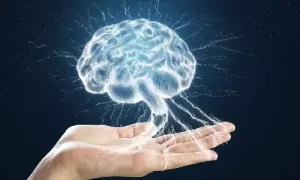
 In the mind of Riley Andersen, experiences became memories stored in coloured orbs which were dispatched into long-term memory each night. While the 2015 Hollywood movie ‘Inside Out’ creatively tried to address one of the most frequently asked questions to scientists — what memories are made of? — a researcher at University of Colorado at Boulder, it seems, has found the real answer.
In the mind of Riley Andersen, experiences became memories stored in coloured orbs which were dispatched into long-term memory each night. While the 2015 Hollywood movie ‘Inside Out’ creatively tried to address one of the most frequently asked questions to scientists — what memories are made of? — a researcher at University of Colorado at Boulder, it seems, has found the real answer.
Charles Hoeffer, an assistant professor of integrative physiology at CU Boulder, has been working to unravel a protein called AKT, which is ubiquitous in brain tissue and instrumental in enabling the brain to adapt to new experiences and lay down new memories. But since its discovery in the 1970s, very little has been known about AKT.
In a new study, funded by the National Institutes of Health of the US, Hoeffer and his colleagues for the first time show that AKT comes in three distinct varieties residing in different kinds of brain cells and affecting brain health in very distinct ways.
This discovery may have real implications for developing targeted treatments for diseases like glioblastoma, Alzheimer’s disease and schizophrenia.
“AKT is a central protein that has been implicated in a bevy of neurological diseases yet we know amazingly little about it,” Hoeffer says.
“Let’s say you see a great white shark and you are scared and your brain wants to form a memory of what’s going on. You have to make new proteins to encode that memory,” Hoeffer explains.
AKT is one of the first proteins to come online, a central switch that turns on the memory factory. But AKT comes in three different varieties and each one in found in different areas of the brain.
Using mice models, Hoeffer’s team silenced the three different varieties of AKT to observe the effect on their brains.
They discovered that AKT2 is found exclusively in astroglia, the supportive, star-shaped cells in the brain and spinal cord that are often impacted in brain cancer and brain injury.
“That is a really important finding,” says study co-author Josien Levenga. “If you could develop a drug that targeted only AKT2 without impacting other forms, it might be more effective in treating certain issues with fewer side-effects.”
The study also found that AKT1 is ubiquitous in neurons and appears to be the most important form in promoting the strengthening of synapses in response to experience, aka memory formation, while AKT3 appears to play a key role in brain growth.
Until now, scientists assumed that all the varieties of AKT “did basically the same thing in the same cells in the same way. Now we know better,” Hoeffer says.
More research is underway to determine what happens to behaviour when different forms of the protein go awry.








